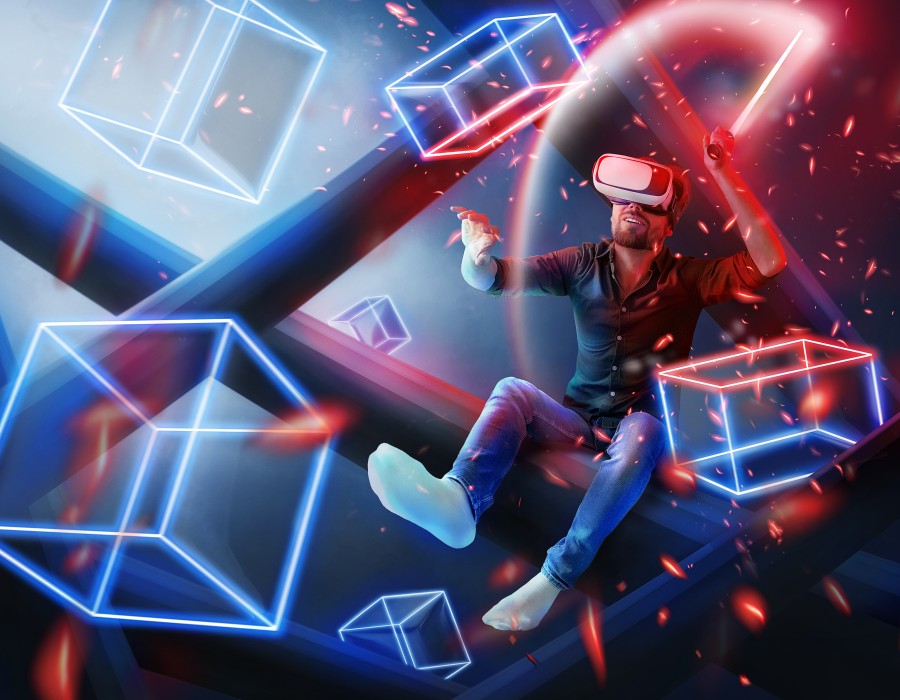In today's digital landscape, the convergence of technology continues to redefine how we perceive and interact with the world around us. One such groundbreaking concept that's rapidly gaining traction is the Digital Twin Metaverse. This comprehensive guide aims to demystify this innovative phenomenon, shedding light on its intricacies, applications, and implications.
Overview
The Digital Twin Metaverse represents a virtual replica of physical entities, environments, or systems. It amalgamates the concepts of digital twins and the metaverse, creating immersive digital experiences mirroring real-world counterparts.
Importance
As technology advances, the significance of the Digital Twin Metaverse becomes increasingly apparent. It offers unparalleled opportunities for simulation, visualization, and collaboration across diverse domains, including manufacturing, healthcare, urban planning, and entertainment.
Understanding
Definition
A Digital Twin Metaverse refers to a digital ecosystem where virtual representations, or digital twins, of physical entities coexist within a simulated environment, often accessible via the internet or specialized platforms.
Components
Key components of the Digital Twin Metaverse include:
- Digital Twins: Virtual replicas of physical entities or systems.
- Metaverse Infrastructure: Digital platforms or environments facilitating interaction and immersion.
- Connectivity: Seamless integration with IoT devices, sensors, and data streams.
Implementation
Use Cases
The applications of the Digital Twin Metaverse are manifold, spanning various industries:
- Manufacturing: Optimizing production processes, predictive maintenance, and quality control.
- Healthcare: Simulating patient scenarios, training healthcare professionals, and personalized treatment planning.
- Urban Planning: Designing sustainable cities, optimizing traffic flow, and disaster preparedness.
Benefits
Embracing the Digital Twin Metaverse yields several benefits:
- Enhanced Decision-Making: Access to real-time data and simulations empowers informed decision-making.
- Cost Efficiency: Streamlined processes, reduced downtime, and optimized resource allocation translate to cost savings.
- Innovation Catalyst: Fostering creativity, experimentation, and collaboration drives innovation and competitiveness.
Challenges
Technical Challenges
Despite its potential, the Digital Twin Metaverse faces several technical hurdles:
- Data Integration: Harmonizing disparate data sources and formats for accurate representation.
- Scalability: Ensuring the scalability of infrastructure to accommodate growing data volumes and user interactions.
- Interoperability: Establishing standards for interoperability and compatibility across platforms and systems.
Security Concerns
Security remains a paramount concern in the Digital Twin Metaverse:
- Data Privacy: Safeguarding sensitive information and ensuring compliance with privacy regulations.
- Cybersecurity: Mitigating cyber threats, such as data breaches, identity theft, and malicious attacks on virtual environments.
Future Prospects
Growth Potential
The Digital Twin Metaverse holds immense growth potential:
- Market Expansion: Market analysts project exponential growth in investments and adoption across industries.
- Technological Advancements: Continued advancements in AI, IoT, and immersive technologies will further augment the capabilities and applications of the Digital Twin Metaverse.
Integration with AI
The synergy between the Digital Twin Metaverse and AI is poised to revolutionize various sectors:
- Predictive Analytics: AI-powered algorithms leverage digital twin data to predict outcomes and optimize processes.
- Autonomous Systems: Integration with AI enables autonomous decision-making and adaptive behaviors in virtual environments.
FAQs
Q. What is a digital twin?
A digital twin is a virtual replica of a physical object, process, or system that enables real-time monitoring, analysis, and optimization.
Q. How does the metaverse tie into digital twins?
The metaverse provides a platform for hosting digital twins, enabling immersive interactions and simulations within virtual environments.
Q. Are there any privacy concerns with digital twins in the metaverse?
Yes, privacy concerns arise regarding the collection, storage, and utilization of personal data within virtual environments, necessitating robust privacy safeguards and regulations.
Q. Can individuals create their digital twins?
Yes, individuals can create their digital twins by capturing and digitizing various aspects of their physical appearance, behavior, and preferences.
Q. How does the digital twin technology enhance user experience in the metaverse?
Digital twin technology enhances user experience by providing personalized interactions, predictive insights, and immersive simulations tailored to individual preferences and behaviors.
Q. Is there any ethical consideration in digital twin usage in the metaverse?
Ethical considerations include issues related to data privacy, consent, bias, and the responsible use of digital twin technology to mitigate potential harm and promote fairness and transparency.





Comments